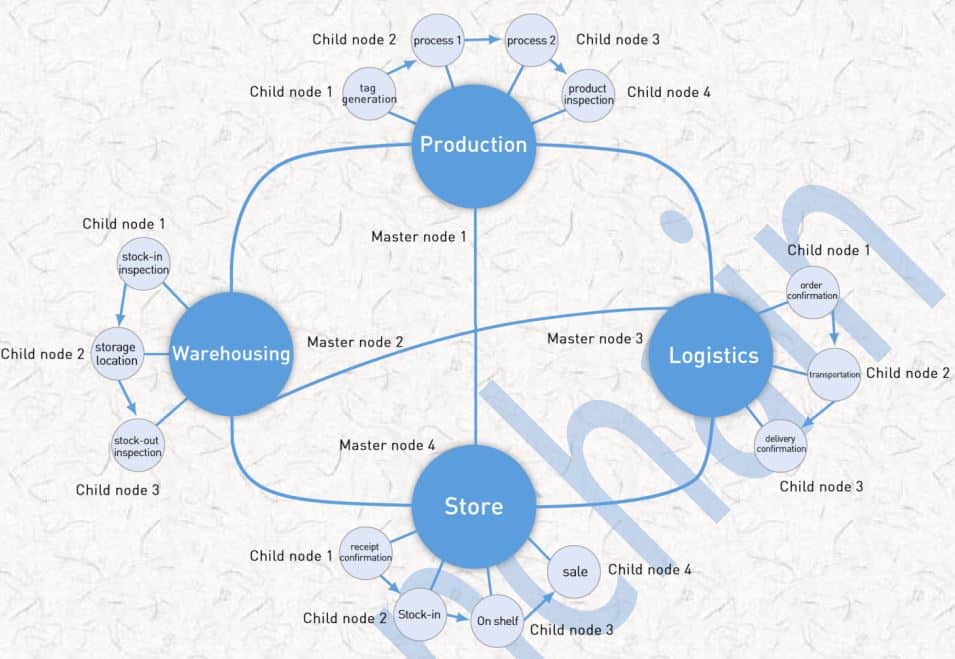Waltonchain Masternode Explained
Last Updated: 1st November 2018
The aim of Waltonchain is broadly two-fold. Firstly, it is to combine the blockchain with Radio-frequency IDentification technology (RFID) to bring about considerable improvements in supply chain management. Secondly, Waltonchain seeks to integrate blockchain technology with the Internet of Things (IoT), to produce a decentralized ecosystem of interconnectivity that Waltonchain refers to as the Value Internet of Things (VIoT). The achievement of both goals is facilitated by the existence of both a Waltonchain Masternode and a Guardian Masternode.
Waltonchain Masternode
Masternodes can be thought of as a series of full nodes that underpin a blockchain’s network. The purpose of a Masternode is to maintain a network, and this can be done in numerous ways, including:
- Validating transactions
- Securing the network
- Enabling governance mechanisms
It is also generally required that a certain amount of funds are put up as collateral in order to host a Masternode on a network. Collateralization serves as a disincentive for bad actors to cheat or attack the system, as doing so would result in their collateralized funds being slashed.
The role of a Waltonchain Masternode is to validate transactions that are made on the network, with every Masternode receiving a reward for each block that is validated. Waltonchain requires a collateral of 5,000 WTC in order to become a Masternode. Other characteristics concerning the function of a Waltonchain Masternode includes:
- Each Masternode must be connected to the internet, in order to enable data tracking in real time.
- Data that is processed between Masternodes in the Waltonchain network is transparent.
- The number of Masternodes within the Waltonchain ecosystem can increase if existing Masternodes on the network are able to reach consensus.
Source: Waltonchain.org
The image above provides an example of the role that a Waltonchain Masternode plays when Waltonchain technology is applied to an apparel orientated use case.
Production
At this stage of production, all goods that are produced are correspondingly tagged with Waltonchain’s RFID technology. At this stage, Waltonchain Masternodes may be responsible for processing information related to produced goods. Furthermore, Masternodes are rewarded in Waltoncoin, with the level of reward determined by the amount of work or quality of work that is contributed.
Warehousing
This stage of the process concerns the location at which goods that have been tagged with Waltonchain’s RFID technology have been stored. Warehousing can be further subdivided into three stages: warehouse-in inspection, storage locations and warehouse-out inspection. Waltonchain’s RFID technology allows the status and all related information pertaining to the product to be recorded at each stage. Using this information, Waltonchain Masternodes are then able to form a block and connect it to the block that was formed in the production stage. Doing this allows Waltonchain to establish a secure history of all information related to products in the supply chain.
Logistics
This stage of the process concerns the transportation of all products that have RFID tags. At this point, Waltonchain Masternodes are responsible for processing the status and information of tagged products. This information will then in turn be used to form another secure block of data that can then be connected to the two previous blocks.
Stores
At this point in the process, produced goods can now be purchased by customers. Masternodes are involved at this stage of the process by being responsible for recording not only product information, but also customer information and preferences.
Guardian Masternodes
The incorporation of Guardian Masternodes into the Waltonchain ecosystem was officially introduced by the Walton team on the 27th of November 2017. According to the Walton team, Guardian Masternodes represent the highest level of seniority that is capable of being achieved on the network. The function of Guardian Masternodes is to secure the network through the implementation of the proof-of-work (PoW) consensus algorithm. Qualifying for a Guardian Masternode requires a collateral of 5,000 WTC.
Rewards for a mining Guardian Masternode are guaranteed to be higher than that of a regular Masternode. Furthermore, holders of a Guardian Masternode share a separate pool of token rewards to holders of a regular Masternode, and also Waltonchain’s PoW reward pool. The formula used to calculate rewards is as follows:
A = GMN Pool
B = MN Pool
C = PoS Pool
D = PoW + PoST (Coins in your wallet and time) rewards
GMN = A + B + C + D
MN = B + C + D
Normal Miner = C + D
WTC Holders (not mining) = C
As the formula demonstrates, holders of a Guardian Masternode stand the chance to be rewarded from more pools than a regular Masternode holder. The Walton team are limited to 15 Guardian Masternodes on the network.
The number of Guardian Masternodes and regular Masternodes within the Waltonchain ecosystem can be tracked here.





